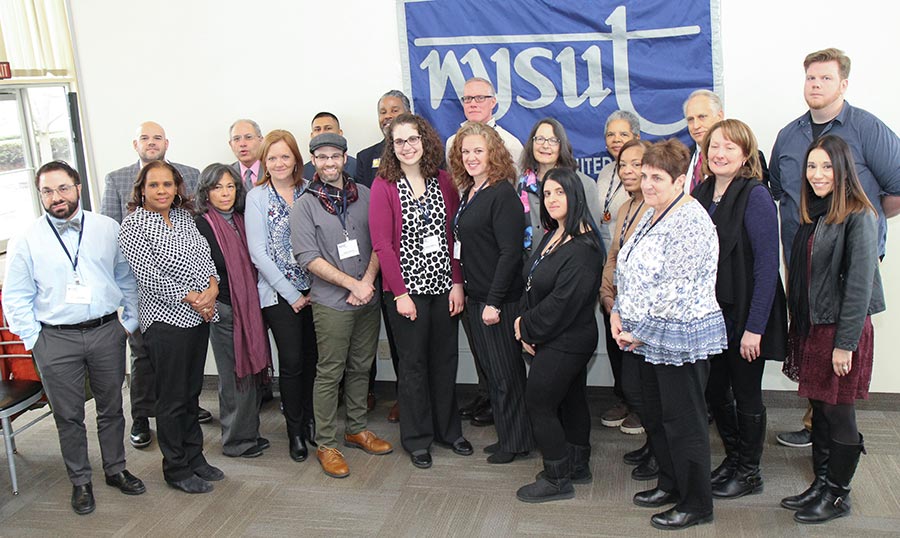A few steps outside the State Assembly chamber, NYSUT activists huddled around Assemblyman Steven Stern, urging that he and his fellow lawmakers do all they can in this year’s budget to help meet the daunting challenges they face working in the state’s special schools.
“Please don’t forget about us,” said Anne Reed, a special education teacher at the Cantalician Center in Depew, which serves developmentally and physically disabled children.
New York’s special schools are funded solely through a state-government mechanism that typically lags two years behind; the schools have no authority to draw funding from local tax revenue. This leaves deep holes in school budgets and forces institutions to seek hefty loans just to make payroll and keep up with escalating costs.
It’s a problem lawmakers were reminded of repeatedly Tuesday as they met with NYSUT members during the union’s Special Schools Lobby Day.
NYSUT is calling upon the state Legislature to establish “funding parity” that would guarantee the state’s special schools and traditional public schools receive equal aid increases — noting the mechanism now used to fund special schools hasn’t been changed in 30 years.
The financial constraints of the arcane formula often lead to buildings falling into disrepair, a lack in the availability of equipment and resources necessary to meet the needs of physically disabled students, and significantly lower pay for teachers than in traditional schools resulting in widespread turnover and teaching vacancies in core classes.
“We’ve been told to go on eBay and look for equipment,” said Cathy McKeown of the United Cerebral Palsy Children’s Learning Center on Long Island. “This is equipment children need just to stand or sit. This is a desperate situation."
Depending on the area of the state, it is not uncommon for a teacher’s salary in a special school to be $30,000 to $40,000 less on average than their traditional public school colleagues. It is also not unusual for teachers’ aides in special schools to leave their jobs for positions in fast food, where the pay is often higher.
“Our school has such a difficult time retaining teachers” which makes it hard to meet the needs of students without appropriate staffing levels, said Sylvia Sugarman of the Mill Neck Manor School for the Deaf on Long Island.
Sugarman said funding is such a problem they've had no step increases or cost-of-living adjustments for staff since 1984.
“It’s been frozen.”

Photo of Special Act Schools activists by Andrew Watson.
Meanwhile, as he sat inside the office of state Sen. Joseph Addabbo, Brad Jagnanan of the Henry Viscardi School in Alberstson spoke of how a lack of funding forced his institution to raise more than $1.5 million on its own to fix a hole in the school’s pool. The pool, he said, plays a critical role in providing physical therapy to students with severe disabilities.
NYSUT President Andy Pallotta, in testimony delivered to state lawmakers, emphasized the need for an increase in funding for both staff salaries at special schools and capital improvement projects.
The union specifically has asked lawmakers for an additional $17.2 million to cover salary increases.
And, while Pallotta said NYSUT is thankful for a $30 million capital fund hike to cover projects at schools that serve the blind and deaf, he called on the Legislature to increase that amount to cover capital costs at all special schools statewide.
“We have a lot of success stories,” Reed said of the work that’s been done at the Catalician Center.
“But we have an awful lot of needs.”